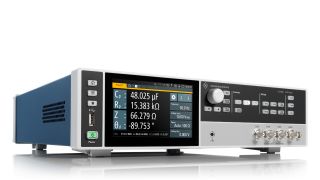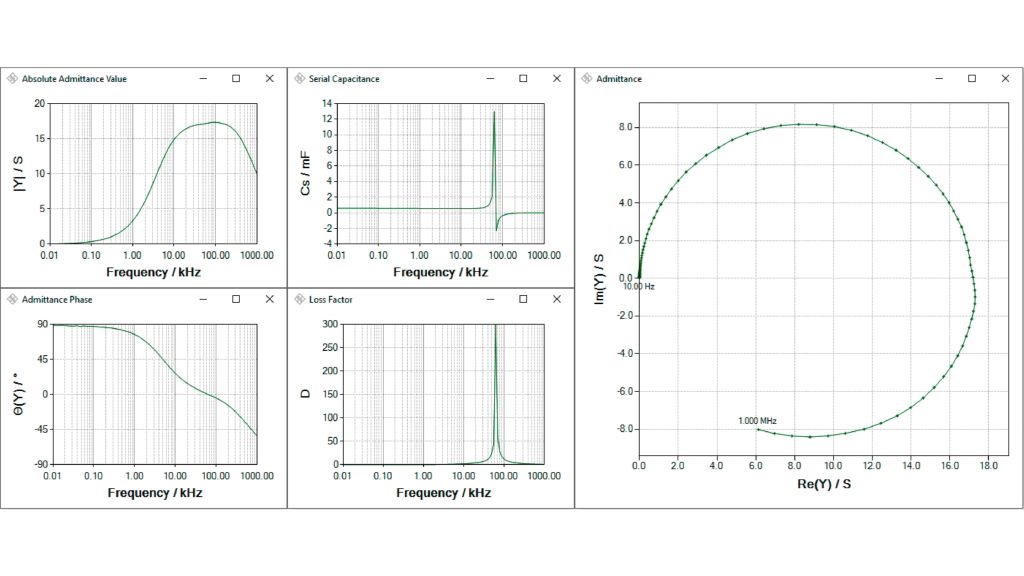Rohde & Schwarz solution
The R&S®LCX LCR meters precisely measure the complex impedance of passive components in the frequency range from 4 Hz to 300 kHz or to a maximum of 10 MHz, respectively. The dynamic impedance measurement function of the R&S®LCX-K106 advanced analysis functions option executes the measurements with swept test signal frequency, level or bias. It also collects the results in a log file. The built-in ChartView gives a quick qualitative overview that shows the dependency of the measurement results on the swept parameter.
A wealth of configuration and visualization possibilities is added with the free-of-charge R&S®LCX sweep tool, available on the Rohde&Schwarz website. The application program remote-controls the R&S®LCX with a sweep of frequency, test signal level or DC bias. Complex impedance and admittance as well as inductance, capacitance, quality and loss factor, resistance and reactance are plotted in diagrams versus the swept parameter. In addition, impedance and admittance are plotted on the complex plane in Nyquist diagrams.












